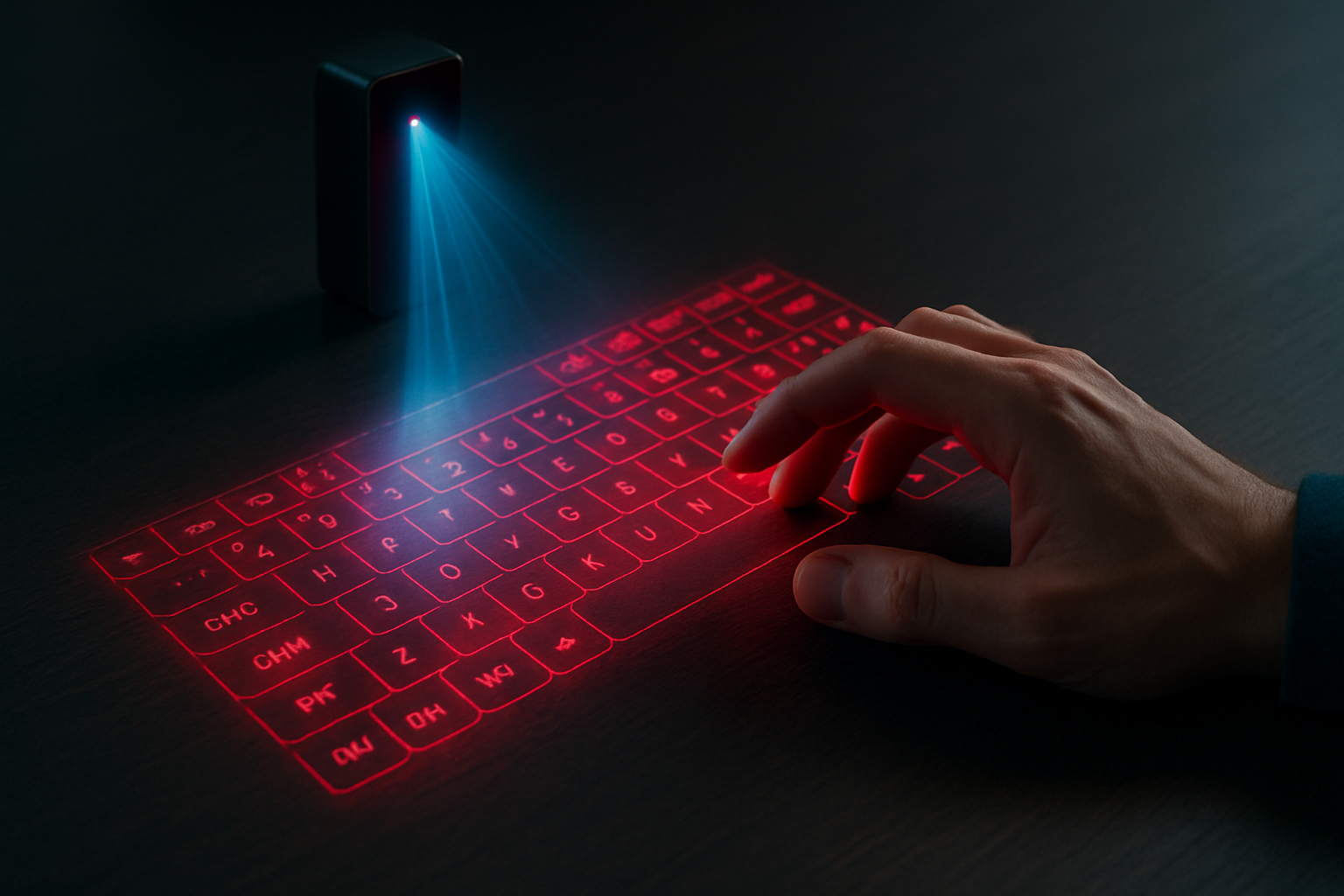Holographic Keyboards: Typing in Thin Air
In an era where technology continues to push boundaries, holographic keyboards are emerging as a futuristic input method that could revolutionize how we interact with our devices. These ethereal interfaces project a virtual keyboard onto any flat surface, allowing users to type in mid-air without the need for physical keys. As we delve into this cutting-edge technology, we'll explore its potential to transform everything from mobile computing to augmented reality experiences.

This technology isn’t entirely new—early prototypes date back to the early 2000s. However, recent advancements in laser projection, motion tracking, and machine learning have significantly improved the accuracy and responsiveness of holographic keyboards, making them increasingly viable for everyday use.
Beyond the Traditional Keyboard
One of the most compelling aspects of holographic keyboards is their versatility. Unlike traditional physical keyboards, which are limited by their fixed layout and size, holographic interfaces can be customized on the fly. Users can adjust the size, layout, and even the language of their keyboard with a simple gesture or voice command.
This adaptability extends beyond simple text input. Developers are exploring ways to create dynamic interfaces that morph based on the task at hand. Imagine a keyboard that seamlessly transitions into a mixing board for music production or a control panel for video editing—all without changing physical hardware.
The Ergonomic Advantage
As more people suffer from repetitive strain injuries due to prolonged keyboard use, holographic keyboards offer a potential solution. By eliminating the need for physical key presses, these interfaces could significantly reduce the stress placed on fingers and wrists during extended typing sessions.
Moreover, the ability to project the keyboard at various angles and distances allows users to maintain a more natural and comfortable posture while working. This ergonomic flexibility could be particularly beneficial for those with mobility issues or in environments where traditional keyboards are impractical.
Challenges and Limitations
Despite their potential, holographic keyboards face several hurdles before they can become mainstream. One of the primary challenges is the lack of tactile feedback. Traditional keyboards provide physical resistance and audible clicks, which many users rely on for accurate typing. Holographic interfaces currently lack this sensory input, which can lead to decreased typing speed and accuracy.
Developers are exploring various solutions to this problem, including the use of haptic feedback through wearable devices or ultrasonic waves that create the sensation of touch in mid-air. However, these technologies are still in their infancy and require further refinement.
Integration with Augmented Reality
Perhaps the most exciting potential for holographic keyboards lies in their integration with augmented reality (AR) systems. As AR headsets become more sophisticated and widespread, holographic interfaces could serve as a bridge between the digital and physical worlds.
Imagine walking into a coffee shop, putting on a pair of AR glasses, and having a full-sized keyboard appear on the table in front of you. This seamless blend of virtual and physical spaces could transform how we work and interact with technology in public spaces.
The Road to Adoption
While holographic keyboards are still primarily in the realm of research and development, several companies are working to bring them to market. Current estimates place the price of consumer-grade holographic keyboard systems between $200 and $500, with enterprise solutions potentially costing much more.
As with any new technology, widespread adoption will depend on factors such as cost, reliability, and integration with existing systems. However, the potential benefits in terms of portability, flexibility, and ergonomics make holographic keyboards an intriguing prospect for the future of human-computer interaction.
Looking Ahead
As we stand on the cusp of this technological leap, it’s clear that holographic keyboards have the potential to reshape our relationship with digital interfaces. While they may not entirely replace traditional input methods in the near future, they offer a glimpse into a world where the boundaries between physical and digital interactions continue to blur.
The coming years will likely see further refinements in projection technology, haptic feedback, and integration with other emerging technologies like AR and VR. As these advancements converge, we may find ourselves typing on air more often than we ever imagined, ushering in a new era of intuitive and immersive computing experiences.





